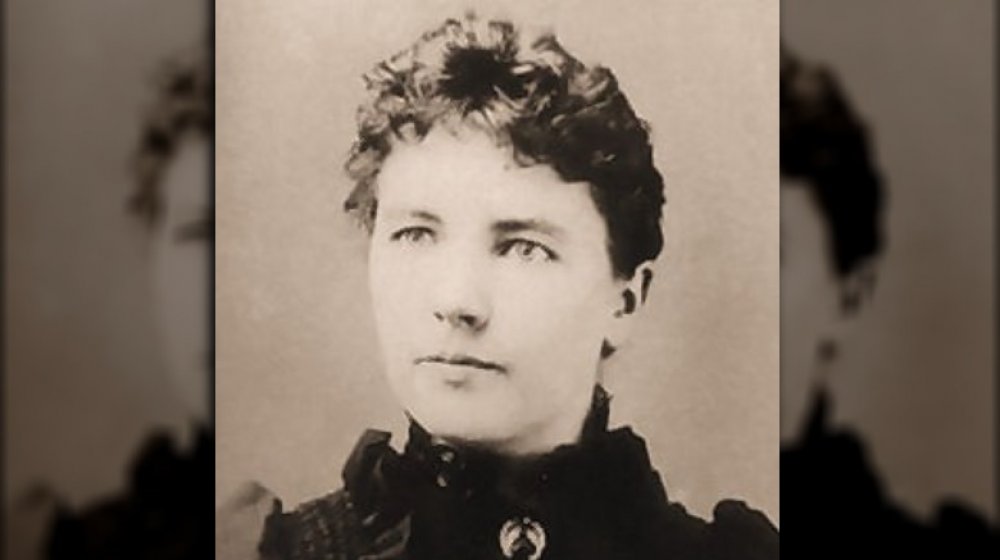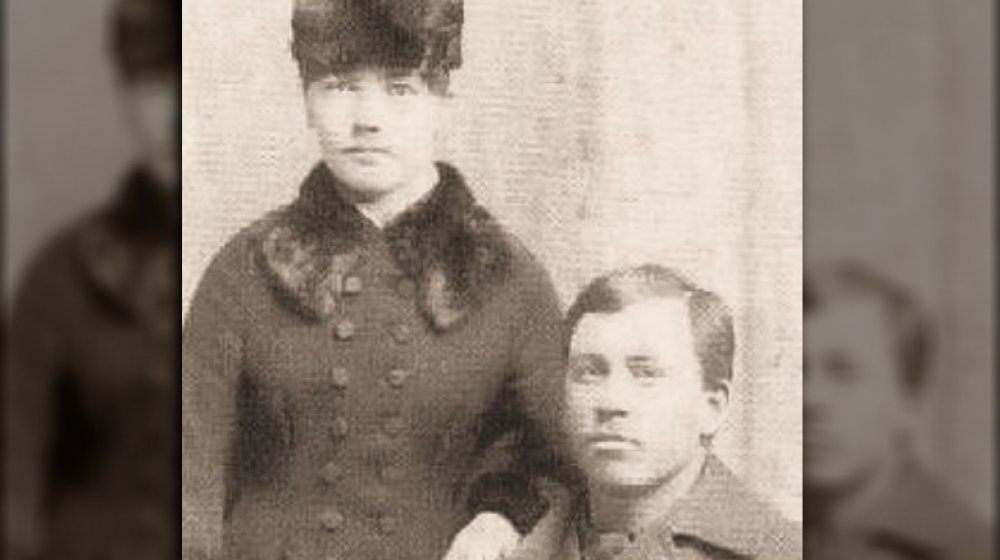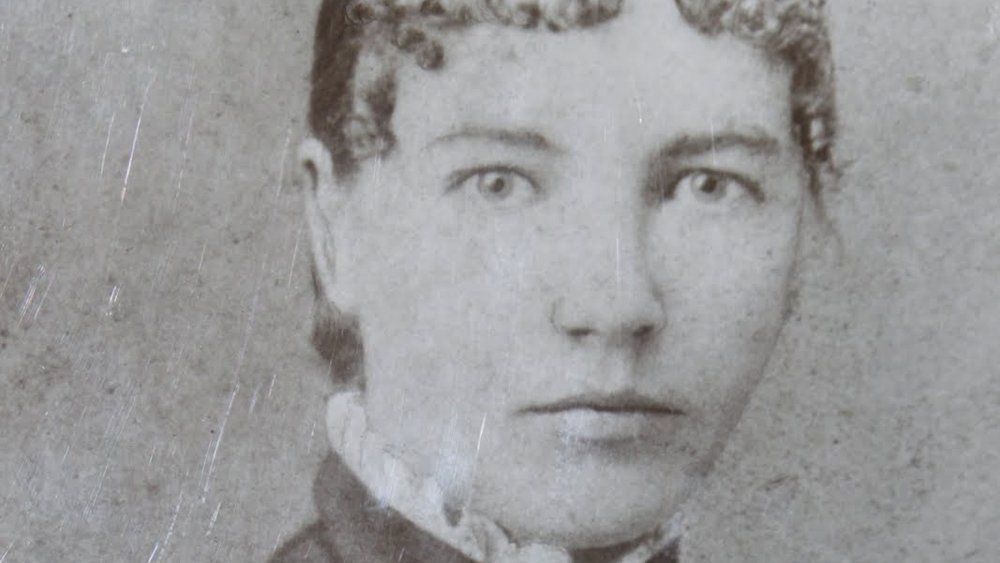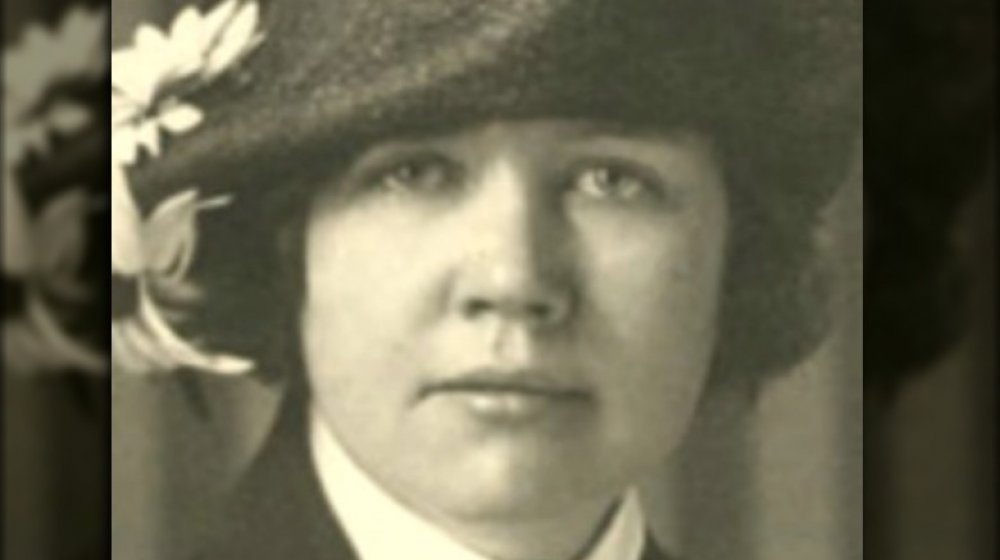The Tragic Real-Life Story Of Laura Ingalls Wilder
Entertainment never lets the facts get in the way of a good story, especially when it comes to history. Whether it's movies, TV, or View-Master reels; whether it's interviews, photographs, or even oral history — some days, the Pacific Ocean itself doesn't contain enough grains of salt with which to take a narrative. It doesn't mean there isn't truth involved. Often enough, there's a divide between a truth and a fact. Take, for instance, the long-running TV series Little House on the Prairie, the brainchild (and cash cow) of Michael Landon and said to be one of President Ronald Reagan's favorite shows (per The New Yorker). The books, and the series upon which they were based, didn't present a perpetually sunny vision of family life on the American frontier. But it wasn't nearly as dark as the reality of Laura's life.
The woman behind the Little House books really was born in the time of westward expansion — February 7, 1867, outside Pepin, Wisconsin, as Biography tells us. She was the second child, one of four girls who survived infancy. A younger brother, Charles, died at nine months. The family moved frequently, sometimes because of economic hardship (crop failures) or opportunity or because they were trying to appropriate land that rightfully still belonged to Native Americans.
Laura was 18 when she married Almanzo Wilder; he was 28
Moving meant hard, hard work. Travel by wagon; riding, or walking, for days on end. Building, by hand, incredibly primitive structures that barely qualified as human shelter. Money was always tight; at one point, her father walked 300 miles to accept work as a farm hand. Laura began to teach school (she did sewing on the side) when she was just 15, even though she'd received little formal education herself — she and her siblings were tutored by their mother, and by each other — because the family needed the cash.
Laura married Almanzo Wilder when she was 18 and he was 28, both living near DeSmet, South Dakota. Parents dearly hope their children will do better than they themselves did in life, but that wasn't true for Laura and Almanzo. They suffered the loss of an infant child, a boy, though their daughter, Rose, would live to adulthood. Crop failures plagued them as well; economic hard times kept them impoverished throughout most of their life together. Adding to life's difficulties was a stroke Almanzo suffered early on, and from which he never fully recovered (he was able to walk, but only with a cane, for the rest of his life). They lost their home and barn to a fire.
She was 65 when she published her first book
Ultimately they moved to Missouri, establishing a farm near Mansfield. Laura began to write — but not the books. She became an agricultural and sort of home economics columnist for local publications, and published articles nationally as well. But it wasn't until her daughter, Rose — herself a journalist, working in San Francisco — started encouraging her that Laura began to set her personal history on paper, says Encyclopedia Britannica.
She didn't type, says The New Yorker. Her first draft, titled Pioneer Girl, was roundly rejected. How much influence Rose exerted on her mother is the subject of ongoing scholarship. It's clear that Rose helped shape the manuscripts, and by the end, Laura was relying on her daughter's advice and guidance.
The first of the Little House books, Little House in the Big Woods, was published in 1932, says Historic Missourians. Laura was 65 years old. She continued to craft her childhood into a series of seven quasi-memoirs over the next 11 years. The books revolutionized children's publishing — here was a woman who had lived that life, writing about her childhood, for children, in terms they would understand and appreciate. In many ways, Laura set a tone and precedent for children's publishing ever after.
Her daughter, Rose, helped fashion the Little House books
She was also a woman of her times, and that's how she wrote. More recently, some have raised concerns about her characterizations of Native Americans and Blacks in her narratives. As The Atlantic reports, in 2018 the Association of Library Service to Children renamed its Laura Ingalls Wilder Award the Children's Literature Legacy Award. A reexamination of Wilder's novels suggest strongly her sympathy for the Native Americans being driven off their land by the westward expansion movement. Still, the language — dated as it is — can be problematic. As The Atlantic writes, "Wilder's observations in Little House on the Prairie about the wrongness of encroaching on Native lands are frequently overshadowed by terms that describe Osage people in stereotypical or dehumanizing ways...."
Laura died in 1957 at the age of 90. Almanzo — she called him "Manly," and he called her "Bessie" — had died eight years before. Laura's remembrances of hard times had finally given the couple the degree of economic stability they'd never known. Their home near Mansfield is now a museum.



